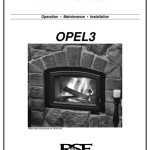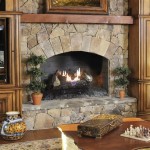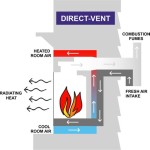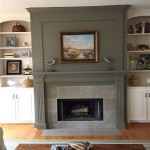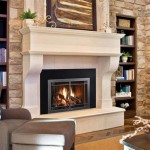```html
Great Room Fireplaces: A Comprehensive Guide
The great room, often the heart of a home, serves as a multi-functional space for relaxation, entertainment, and family gatherings. Integrating a fireplace into this central area can significantly enhance its ambiance, functionality, and aesthetic appeal. This article provides a comprehensive overview of great room fireplaces, covering various types, design considerations, installation factors, and maintenance practices.
Types of Great Room Fireplaces
Selecting the appropriate fireplace type is crucial for maximizing its impact within the great room. The choices extend beyond simple aesthetics and involve factors such as fuel source, efficiency, and installation requirements. Understanding the nuances of each type is paramount to making an informed decision.
Wood-Burning Fireplaces: These fireplaces offer a traditional and visually appealing option, providing the quintessential crackling fire and natural warmth. However, they require a dedicated chimney for venting exhaust and necessitate a reliable source of firewood. Wood-burning fireplaces can be less efficient than other options, with a significant portion of heat escaping through the chimney. Furthermore, they require regular cleaning to remove creosote buildup, a flammable substance that can pose a fire hazard. Local regulations regarding wood-burning restrictions should also be considered before installation.
Gas Fireplaces: Gas fireplaces offer convenience and efficiency. They are available in two primary types: natural gas and propane. Natural gas fireplaces connect to a municipal gas line, providing a continuous fuel source. Propane fireplaces require a propane tank, which needs to be refilled periodically. Gas fireplaces can be vented directly through a wall or ceiling, simplifying installation in some cases. They offer precise temperature control and can be easily turned on and off, making them a practical choice for supplemental heating. Modern gas fireplaces often feature realistic-looking artificial logs and adjustable flame heights, mimicking the appearance of a wood-burning fire.
Electric Fireplaces: Electric fireplaces are the most versatile and easiest to install option. They require only a standard electrical outlet and do not produce any emissions. Electric fireplaces use heating coils to generate warmth and project a simulated flame image onto a screen. While they may not provide the same level of heat as wood-burning or gas fireplaces, they are an energy-efficient choice for supplemental heating and can be operated with or without heat, allowing homeowners to enjoy the ambiance of a fireplace year-round. They are available in various styles, including wall-mounted, freestanding, and insert models, making them suitable for diverse great room designs.
Ethanol Fireplaces: Ethanol fireplaces burn liquid bioethanol, a renewable fuel source. They do not require a chimney or venting system, making them a relatively easy to install option. Ethanol fireplaces produce a clean-burning flame and emit minimal pollutants. However, they typically provide less heat than other fireplace types and require regular refueling. They are often chosen for their modern aesthetics and portability, as they can be easily moved from room to room. Safety precautions, such as ensuring adequate ventilation and using only approved bioethanol fuel, should be strictly observed.
Design Considerations for Great Room Fireplaces
The design of a great room fireplace should complement the overall style and layout of the space. Careful consideration should be given to factors such as size, materials, and placement to create a cohesive and visually appealing focal point.
Size and Scale: The size of the fireplace should be proportional to the size of the great room. A fireplace that is too small may be visually underwhelming, while a fireplace that is too large can overwhelm the space. Consider the dimensions of the wall where the fireplace will be located and the height of the ceiling. A general rule of thumb is to choose a fireplace width that is approximately one-third to one-half the width of the wall. The height of the fireplace should also be proportionate to the ceiling height, ensuring a balanced and harmonious look.
Material Selection: The materials used for the fireplace surround and mantel can significantly contribute to its overall aesthetic. Common materials include brick, stone, tile, wood, and metal. Brick and stone offer a traditional and rustic appeal, while tile and metal provide a more modern and contemporary look. Wood can be used for the mantel and surround to add warmth and character to the space. The choice of materials should complement the existing décor and architectural style of the great room. Consider the color and texture of the materials to create a visually appealing contrast or harmonious blend with the surrounding elements.
Placement and Layout: The placement of the fireplace should be carefully considered to maximize its impact and functionality. The fireplace is often placed on a central wall to serve as a focal point for the room. The layout of the furniture should be arranged to emphasize the fireplace, creating a comfortable and inviting seating area. Consider the location of windows and doors to avoid blocking natural light or creating drafts. In open-concept great rooms, the fireplace can be used to define different zones within the space. For example, a double-sided fireplace can separate the living area from the dining area.
Mantel and Surround Design: The mantel and surround are integral components of the fireplace design, providing an opportunity to showcase personal style and add architectural interest. The mantel serves as a shelf for displaying decorative items, such as artwork, photographs, and candles. The surround frames the firebox and protects the surrounding wall from heat. The design of the mantel and surround should complement the overall style of the fireplace and the great room. Consider adding architectural details, such as crown molding, corbels, or wainscoting, to enhance the visual appeal of the fireplace. The use of contrasting colors or textures can also create a dramatic effect.
Installation and Maintenance of Great Room Fireplaces
Proper installation and regular maintenance are essential for ensuring the safe and efficient operation of a great room fireplace. Regardless of the fireplace type, adhering to manufacturer's instructions and local codes is crucial.
Professional Installation: It is highly recommended to hire a qualified professional for the installation of wood-burning, gas, and ethanol fireplaces. A professional installer will have the necessary expertise to ensure that the fireplace is properly vented, connected to the fuel source, and meets all safety regulations. Electric fireplaces can typically be installed by homeowners, but it is important to follow the manufacturer's instructions carefully. Improper installation can lead to safety hazards, such as fires and carbon monoxide leaks.
Regular Cleaning and Inspection: Regular cleaning and inspection are essential for maintaining the performance and safety of all fireplace types. Wood-burning fireplaces require regular cleaning to remove creosote buildup from the chimney. Gas fireplaces should be inspected annually by a qualified technician to ensure that the gas lines are leak-free and the burner is functioning properly. Electric fireplaces should be cleaned regularly to remove dust and debris from the heating coils and fan. Ethanol fireplaces should be cleaned after each use to remove any spilled fuel.
Safety Precautions: Safety precautions should always be observed when operating a fireplace. Never leave a fire unattended, and keep flammable materials away from the fireplace. Install smoke detectors and carbon monoxide detectors in the great room to provide early warning of any potential hazards. Use a fireplace screen to prevent sparks from escaping the firebox. Ensure that children and pets are supervised around the fireplace.
Fuel Storage: Proper fuel storage is important for both wood-burning and gas fireplaces. Wood should be stored in a dry, covered area away from the house to prevent rot and insect infestation. Propane tanks should be stored outdoors in a well-ventilated area, away from combustible materials. Never store flammable liquids, such as gasoline or kerosene, near the fireplace.
By carefully considering the type of fireplace, design elements, installation procedures, and maintenance practices, homeowners can create a beautiful and functional focal point in their great room that will provide warmth, ambiance, and enjoyment for years to come.
```
Unique Great Room Fireplace Ideas For Cold Minnesota Winters

Design Dilemmas How To A Great Room Fireplace Wall With Built Ins And Television Interior Designer Des Moines Jillian Lare

Cozy Timber Frame Homes With Fireplaces Davis

10 Cozy Modern Fireplaces That Warm Our Hearts Your Cottage

5 Fireplace Design Ideas For Your Modern Mountain Home Uda Ltd

Timber Frame Great Room Photos By Riverbend

Great Room With Fireplace Transitional Living Design Family Arrangements

Galleries New England Home

11 Appealing Living Room Designs With A Fireplace

6 Wood Burning Fireplaces Revisited On The Drawing Board
Related Posts



